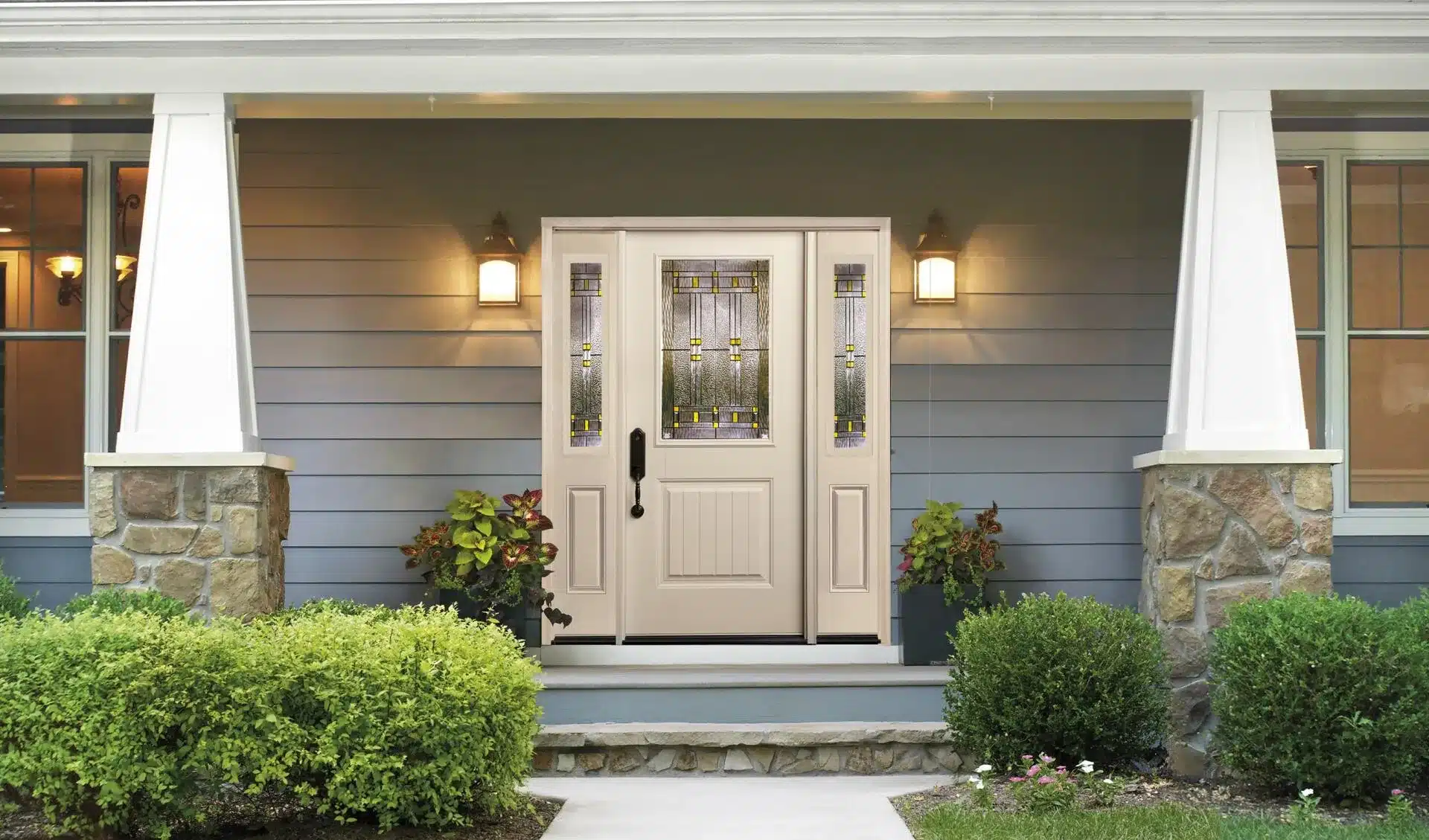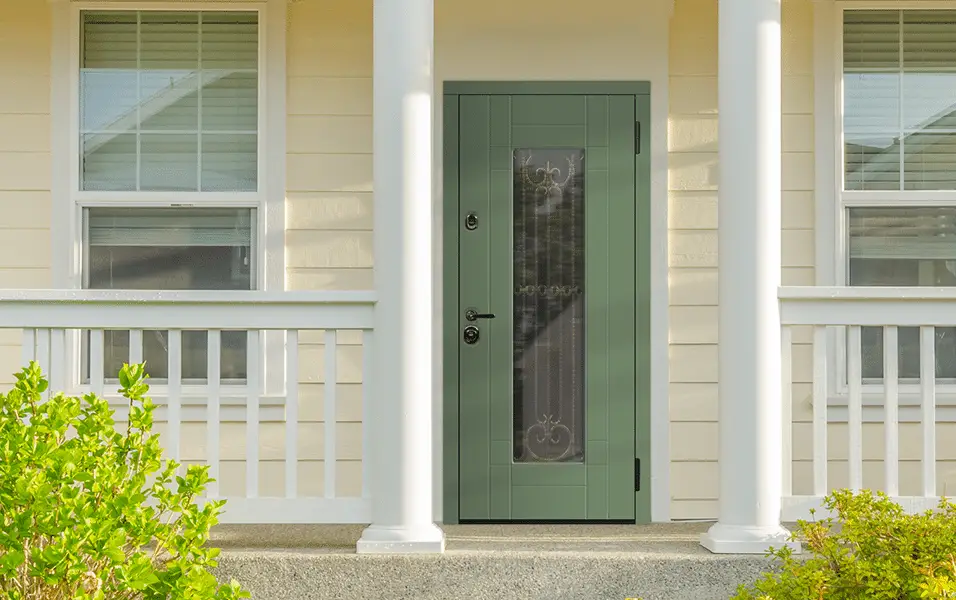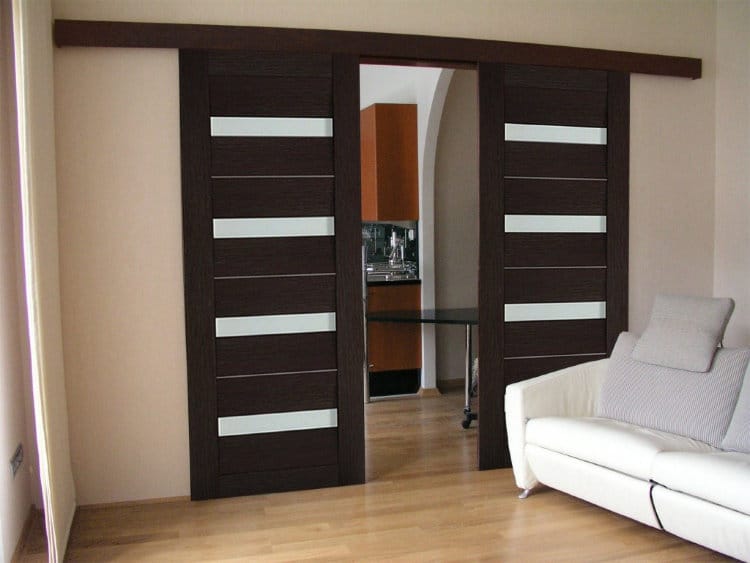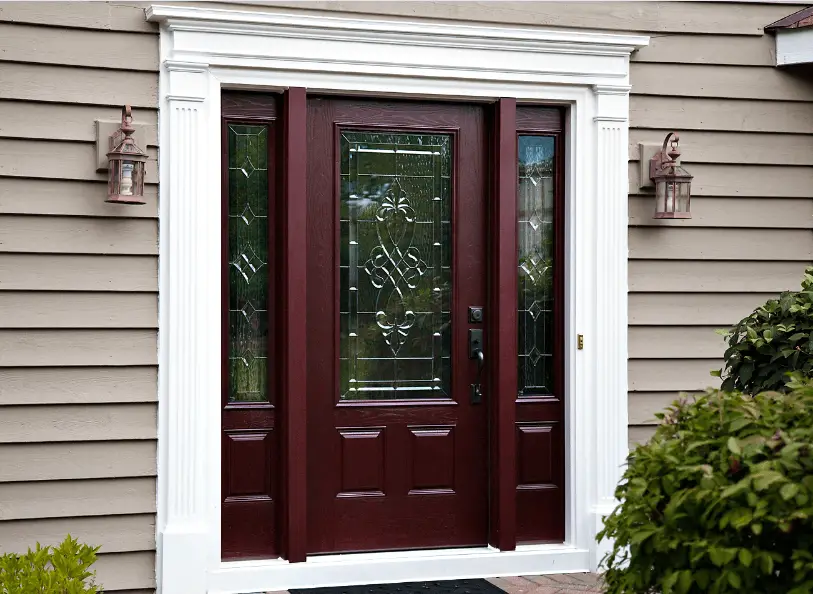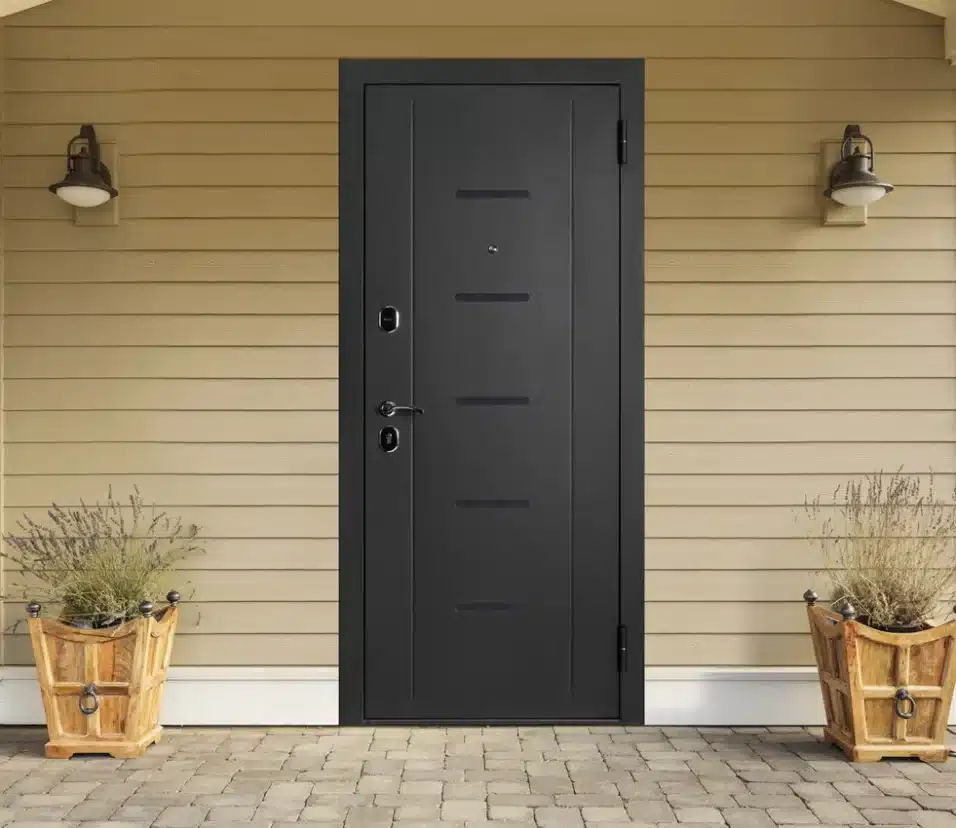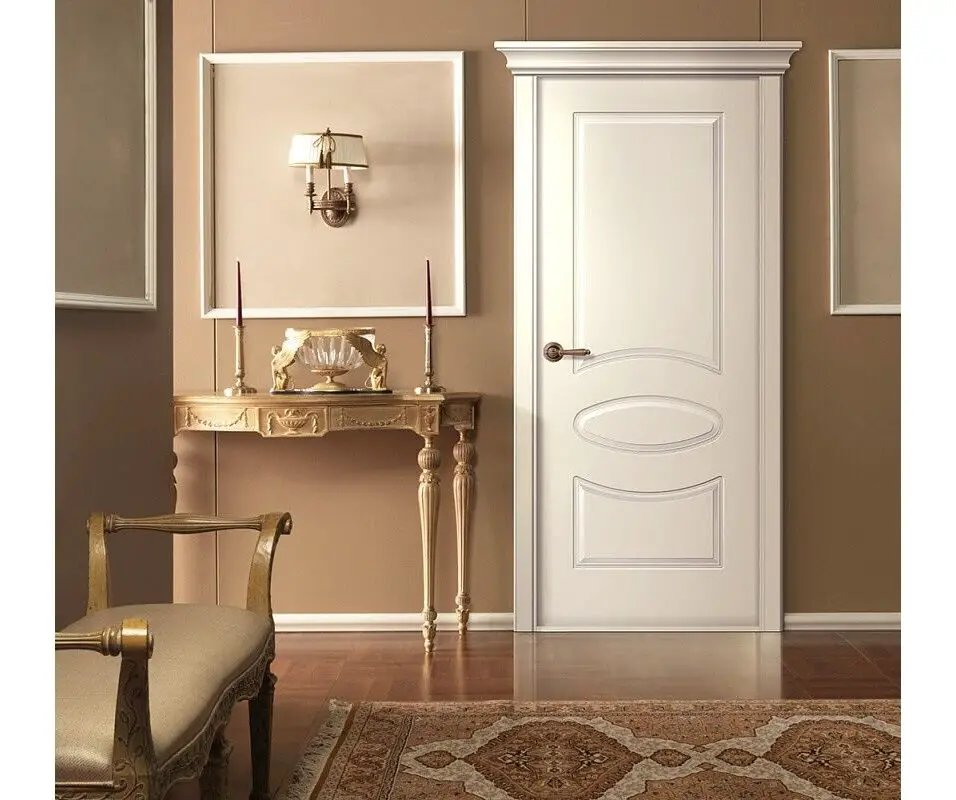How Thick Is An Exterior Door
Introduction
How Thick Is An Exterior Door? Welcome to the enlightening discussion of exterior door thickness, an often overlooked but vital house design element. The thickness of an outside door affects security, insulation, and structural integrity, despite its simplicity. We explain exterior door thickness and its determinants in this guide.
Exterior doors are not just entry points; they are barriers against the elements, intruders, and noise. The thickness of these doors directly impacts their ability to fulfill these functions effectively. Knowing how door thickness affects home renovation projects and new construction will help you make informed decisions that meet your needs.
We will unravel the relationship between door thickness and insulation, as well as the implications for energy efficiency and indoor comfort. Additionally, we’ll explore how door thickness contributes to sound insulation, enhancing the tranquility of your living spaces.
From traditional wooden doors to modern steel or fiberglass options, the choices available can be overwhelming. By the end of this guide, you’ll be equipped with the knowledge to assess different exterior door thicknesses in relation to your specific needs, architectural style, and geographic location.
Join us as we venture into the realm of exterior door thickness—a seemingly subtle factor with far-reaching implications for your home’s security, comfort, and aesthetics. Prepare to uncover the insights that will guide you in making decisions that resonate with both practicality and design sensibilities.
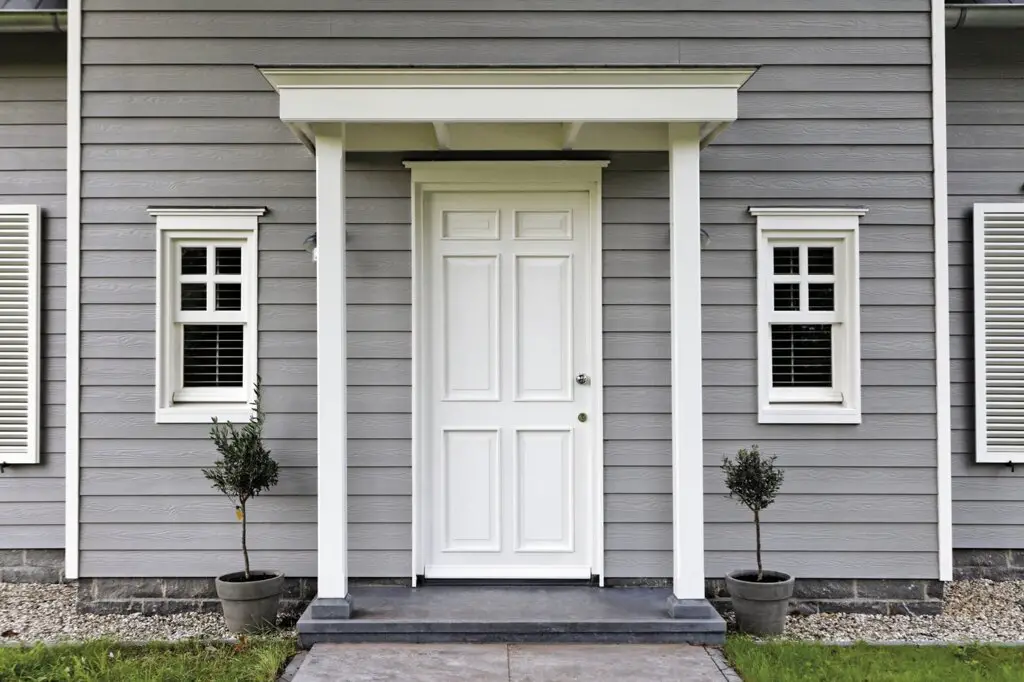
What is the standard thickness of a door?
1 3/8 inches
For interior doors, the standard thickness is 1 3/8 inches, although some doors may be thicker than this. Exterior doors tend to have added thickness to improve security and insulation: you’re likely to find exterior doors with a thickness of 1 3/4 inches.
The standard thickness of a door can vary depending on the type and location of the door within a building. Here are some common thickness standards:
- Interior Doors: The standard thickness of interior doors in residential construction is typically 1 3/8 inches (35 mm). However, some variations exist, with some doors being 1 3/4 inches (44 mm) thick, especially for soundproofing or fire-rated purposes.
- Exterior Doors: Exterior doors are generally thicker and more robust than interior doors to provide better insulation and security. A standard exterior door typically has a thickness ranging from 1 3/4 inches (44 mm) to 2 inches (50 mm).
- Commercial and Industrial Doors: These doors can be even thicker, often exceeding 2 inches, to withstand heavy use and provide enhanced security.
It’s important to note that while these dimensions represent standard practices, variations are possible based on specific requirements and architectural preferences.
What is the standard size of an exterior door?
Standard Size for Exterior Doors
The standard size for an exterior door is 80 inches by 36 inches which is 6 ft, 8 inches by 3 ft. 96 inches or 8 ft. is now very common for newer homes and stock exterior doors are also commonly available in 30 and 32-inch widths.
The standard size of an exterior door can vary somewhat depending on regional building codes and individual architectural designs. However, in the United States, a common standard size for an exterior door is typically 36 inches (91 cm) in width and 80 inches (203 cm) in height.
Additionally, custom-made doors are available, allowing homeowners and builders to choose specific sizes to fit unique architectural needs. When replacing or installing an exterior door, it’s essential to measure the actual opening accurately to ensure a proper fit, especially if the doorway deviates from standard dimensions.
How thick is steel on exterior door?
Hollow metal doors, or steel doors, are primarily used for commercial exterior doors. A standard commercial hollow metal door is 1-3/4” thick. Some homes have residential grade hollow metal doors used as the side entry door into the garage. Residential grade hollow metal doors are 1-3/8” thick.
The thickness of steel on an exterior door can vary depending on the door’s design, intended use, and manufacturer. Commonly, you will find steel doors in the range of 20 to 24 gauge.
- 24-Gauge Steel: It’s approximately 0.0226 inches (0.574 mm) thick. These doors offer decent security and insulation for most homes.
- 22-Gauge Steel: Slightly thicker at around 0.0299 inches (0.759 mm), 22-gauge steel doors provide better durability and security. These doors are suitable for homes where enhanced security is a concern.
- 20-Gauge Steel: At about 0.036 inches (0.914 mm), 20-gauge steel is even thicker and offers higher security and insulation properties.
Are all exterior doors the same thickness?
Front door thickness: Most doors will be 1 3/4 inches thick regardless of type or style. While this measurement is the standard thickness, it could vary slightly depending on the material of your door.
No, not all exterior doors are the same thickness. Exterior doors come in various thicknesses, and the choice of thickness depends on several factors:
- Purpose: Exterior doors have different purposes, from front entry doors to back doors, side doors, or doors leading to garages or patios. The intended purpose can influence the door’s thickness. For example, a front entry door is often thicker for better security and insulation, while a door to a less critical area of the house may be thinner.
- Security: Doors designed for enhanced security, such as those in high-crime areas or for commercial properties, are often thicker and made from heavier gauge steel to deter break-ins.
- Climate: The local climate also plays a role.
- Aesthetic and Architectural Design: Some exterior doors are customized to fit specific architectural styles and aesthetics. These doors can have unique thicknesses and designs to match the overall look of the building.
Therefore, the thickness of an exterior door varies based on these considerations and is not standardized. When choosing an exterior door, it’s important to assess your specific needs and preferences to select the right thickness and material for your application. Additionally, local building codes may dictate certain requirements for exterior door thickness in your area.
What is the typical thickness of a steel door?
The typical thickness of a steel door can vary depending on its intended use and design. Steel doors are known for their strength and security, and their thickness plays a significant role in these attributes. In residential construction, the typical thickness of a steel entry door is usually 1 3/4 inches (44 mm). However, doors designed for commercial or industrial applications may be thicker, often ranging from 1 3/4 inches to 2 inches (44 mm to 50 mm) or more. Thicker steel doors offer greater durability and security, which is especially important for high-traffic or high-security areas.
What is the basic size of a door?
80 inches by 36 inches
The standard door measurements of an interior door are 80 inches by 36 inches. And the typical door width should be at least 24 inches, while the height should be 80 inches.
The basic size of a door can vary depending on its type and location within a building. Here are some standard door sizes commonly used in residential construction in the United States:
- Interior Doors: Interior doors typically have a standard width of 24 inches (61 cm), 28 inches (71 cm), 30 inches (76 cm), or 32 inches (81 cm). The standard height for interior doors is usually 80 inches (203 cm). However, custom sizes are also available to accommodate unique architectural designs.
- Exterior Doors: Exterior doors, which serve as the main entry points to a building, are often wider than interior doors. A common standard size for an exterior door in the U.S. is 36 inches (91 cm) in width and 80 inches (203 cm) in height. However, exterior doors can come in various sizes, and double doors (French doors) with wider openings are also prevalent for main entrances.
The specific size of a door may vary depending on local building codes, architectural preferences, and the building’s design. When installing or replacing a door, it’s essential to measure the door frame accurately to ensure a proper fit.
What is the thickness of a door frame in inches?
The standard door thickness for interior doors is 1 ⅜ inches, though if your interior door is taller than 80 inches or wider than 36 inches, the recommended thickness by building codes increases to 1 ¾ inches. Closet doors are narrower and aren’t required to meet the standard interior door building codes.
The thickness of a door frame, often referred to as the “jamb width,” varies depending on the construction method and the type of door frame used. Standard door frames for residential construction typically have a jamb width of 4 9/16 inches (116 mm) or 6 9/16 inches (167 mm). These measurements are designed to accommodate standard 1 3/4-inch (44 mm) thick doors.
Which grade of steel is best for door?
The choice of #304 Grade Stainless Steel greatly reduce your time required for door maintenance. This material is excellent in a wide range of atmospheric environments and many corrosive media.
The grade of steel best suited for a door depends on the door’s intended use and the desired level of security and durability. Steel doors are typically made from a variety of steel grades, each with its own characteristics:
- Low-Carbon Steel (A366/1008): This grade of steel is commonly used for interior doors and doors with less emphasis on security. It’s more affordable and suitable for residential applications where security is not a top priority.
- Medium-Carbon Steel (A570/1010): Medium-carbon steel offers better strength and durability compared to low-carbon steel. It is often used for exterior doors in residential settings and some commercial applications.
- High-Carbon Steel (A569/1018): High-carbon steel provides excellent strength and is suitable for doors where security is a primary concern. It’s commonly used for commercial and industrial doors.
- Galvanized Steel: Galvanized steel is coated with a layer of zinc to resist corrosion. It’s an excellent choice for exterior doors in areas with harsh weather conditions.
- Stainless Steel: Stainless steel is highly resistant to corrosion and is often used in high-end residential and commercial doors where aesthetics and durability are essential.
The best grade of steel for a door depends on factors like the door’s location, security needs, budget, and design preferences. Consulting with a door specialist or manufacturer can help you determine the most suitable steel grade for your specific requirements.
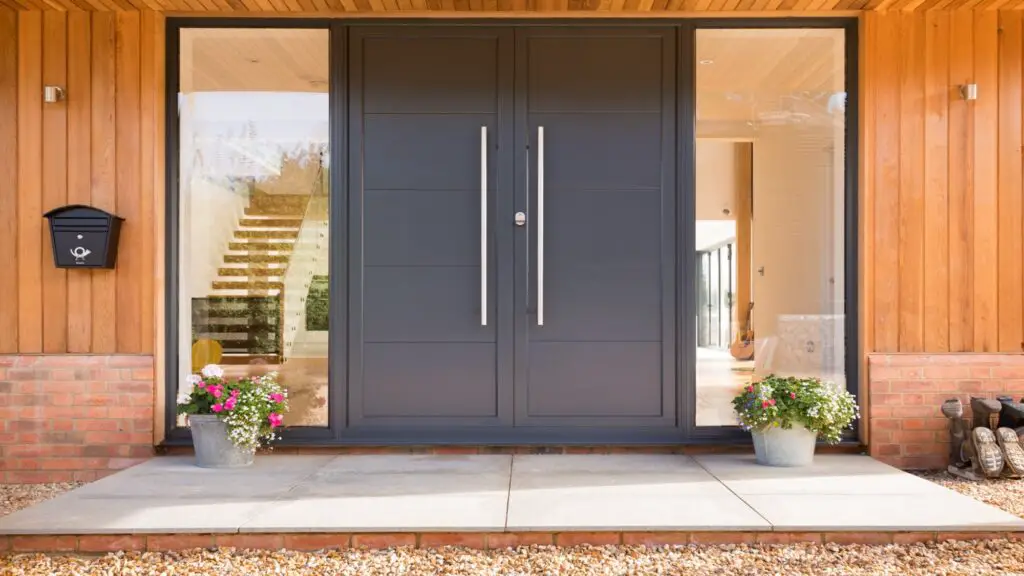
Conclusion
We’ve navigated the often overlooked yet critically important dimension of home design—the thickness of exterior doors. What might have initially seemed like a minor consideration has revealed itself to be a substantial contributor to the security, insulation, and overall functionality of your living spaces.
By now, you’ve grasped the pivotal role that door thickness plays in maintaining a secure and comfortable home environment. The correlation between thickness and insulation has become evident, as has the impact on energy efficiency and noise reduction. Armed with this knowledge, you’re better equipped to make informed decisions when selecting or upgrading your exterior doors.
Remember that the choices you make regarding door thickness extend beyond practicality. They also influence the visual coherence of your home’s façade, aligning with your design aesthetic and architectural style.
Thank you for accompanying us on this journey through the dimensions of door thickness. May the insights you’ve gained serve you well as you continue to create a space that resonates with your aspirations and enriches your daily life.



